The NVIDIA RTX 5000 Ada (not to be confused with the NVIDIA Quadro RTX 5000) is the company’s new workstation GPU that is one step down from the NVIDIA RTX 6000 Ada Generation Top-End Workstation GPU Review. It offers a ton of performance and 32GB of ECC memory capacity in a relatively easy-to-integrate dual-slot blower cooler. If you purchase a NVIDIA RTX 5000 Ada in a pre-built workstation or loose, there is a good chance it comes via PNY who helped us do this review. Thanks to PNY for the support on this. Let us get to the review.
NVIDIA RTX 5000 Ada Generation Graphics Card Review
First off, the NVIDIA RTX 5000 Ada is a dual-slot blower-style cooler design. Blower-style coolers fell out of favor for consumer GPUs as TDPs increased after the “Pascal” generation of GPUs. The advantage of these GPUs is that they are much more compact and are designed to fit in workstations including those that fit server-like dual-width GPUs.
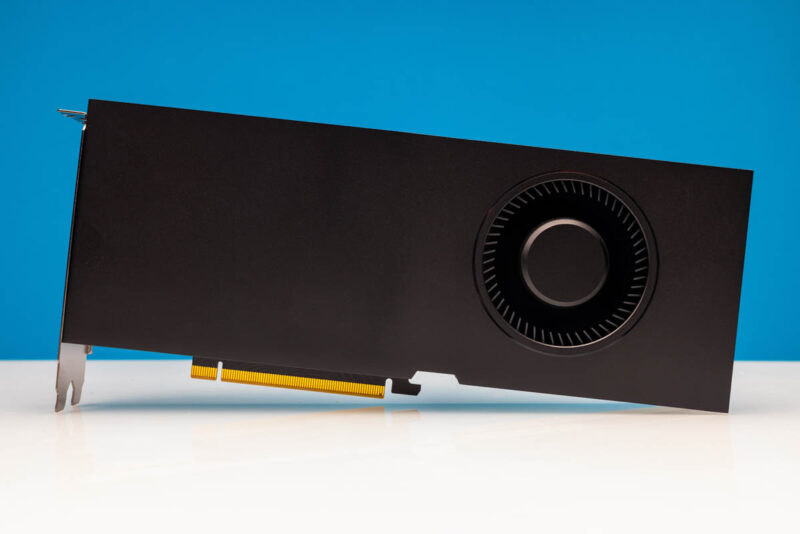
The top of the unit will give folks pause. While there are connectors for things like the 3D stereo function there is a notable absence. The NVIDIA RTX 5000 Ada generation, like the RTX 6000 Ada, does not have NVLink. Given the cost and level of this card, this may shock some of our readers. The previous generation NVIDIA RTX A5500 supports NVLink.
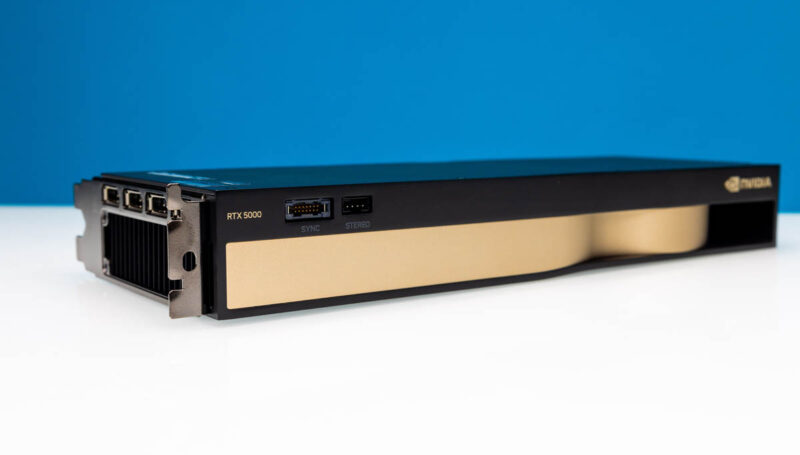
The end of the card is a solid piece of metal except for two features. There are two screw mounting points for GPU retention brackets. Those are common in high-end workstations. The other feature is the PCIe CEM5 16-pin power connector. This is placed at the end so as to make for easy cable routing and minimal airflow disruption.
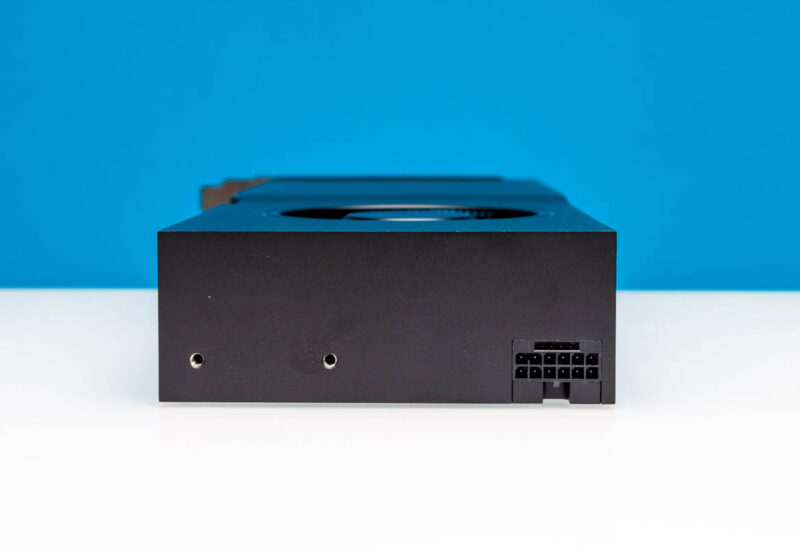
Unlike the RTX 6000 Ada, this card has a fan perforation on one side of the GPU, the front. The back side of the GPU is just a metal backplate.
The more exciting end of the GPU is the I/O side. Here we have four DisplayPort 1.4a ports. There is also ample room devoted to the cooler design. These ports are active by default, but for those using the vGPU functionality, they will be disabled.
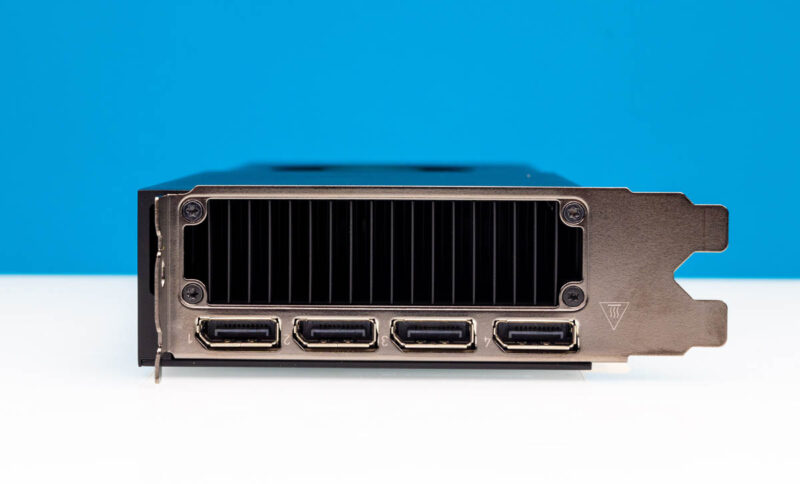
Now let us move on to the Specifications of the NVIDIA RTX 5000 Ada.
NVIDIA RTX 5000 Ada Specifications
Here are the key specs for the card:
- GPU: AD102
- Shader Units: 12800
- Video Memory: 32GB GDDR6
- Memory Bus: 256-bit
- Engine Clock Boost: 1155 MHz (Boost: 2550 MHz)
- Memory Clock: 2250 MHz (18 Gbps effective)
- PCI Express: 4.0
- Display Outputs: 4x DisplayPort 1.4a
- TDP: 250W
- Cooling: Single Blower Type Cooler
- Slot Size: 2
- Power Connector: 1x 16-Pin
- Card Length: 267 mm x 112 mm (10.5” x 4.4”)
Just taking a few moments here to discuss what the step down from the RTX 6000 Ada entails:
- 12800 vs 18176 CUDA Cores
- 32GB GGR6 vs. 48GB GDDR6X memory
- Only a 50W TDP delta
When one sees the lineup, especially at the lower end from both AMD and NVIDIA, the difference between one model and the next is often small. In this case, the difference is pretty big on both the specs and the pricing sides.
Let us move on and start our testing with compute-related benchmarks.

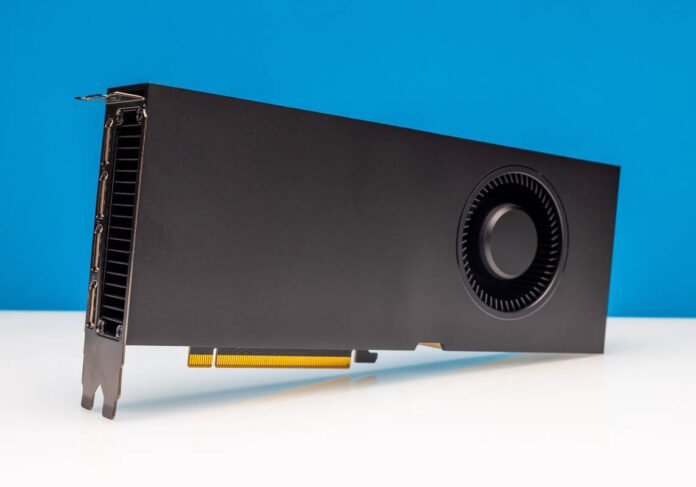

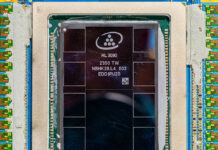

I thought gaming GPUs didn’t use blowers because of an enforced market segmentation by Nvidia to prevent those GPUs from being used in the data center.
Yes. The dual slot blower is officially banned from nvidia for top-end cards. However we still have vendors making them and offering it as “cheap alternatives to dc cards”. This is something Nvidia does not want OEMs to make, but unable to ban OEM from making because the potential market is just so high.
The article doesn’t mention it, but I see these have been crippled when it comes to dual precision compute, just like the previous generations.
Ada, Ampere, Turing – no DP capable cards (or at least not severely cut down to 1/64 of SP performance).
Volta (GV100) is the last DP compute card released, and that’s becoming a bit outdated.
Once upon a time, these Quadros (or whatever they are named today) were engineer’s cards. You had to have a high-end one to accelerate engineering simulations (FE, CFD and similar). I guess AI stole the show, and nobody is going to cater to that small market anymore.
What’s the proper way to build a DP crunching workstation nowadays, anyway?
A key reason not discussed in the review for why some users will almost have to use this card vs a much cheaper and faster 4090 is the ECC Memory this card has. For some applications and uses, that is required, also for liability reasons.
Apart from all that, I prefer blower cards if available; unfortunately, current generation consumer cards in that design are almost impossible to find.
Actually you can enable ECC on 4090 the same way on RTX workstation cards. These cards both lose a portion of the total VRAM capacity if ECC is enabled, 4090 just has half of the total capacity.
@TurboFEM: That’s because both NVIDIA and AMD have abandoned FP64 in mainstream architectures as its market share is not worth the cost of silicon to implement it at full speed. Gaming doesn’t need it, and neither does AI/ML.
On NVIDIA side the H100 can perform one FP64 operation every 2 cycles, while the Ada can do it every only every 4 cycles. AMD has implemented native FP64 since CDNA 2, and further improved it in CDNA 3.
So basically for FP64 you need to go for the highest end compute accelerators.
@eastcoast_pete: There’s also driver support and qualifications that are critical for certain uses. Using mainstream cards and mainstream drivers is out of the question for them.
@Gnattu: NVIDIA specifically forbids using mainstream cards in commercial compute (via CUDA and driver EULAs), and actively goes after companies who, for example, rent them as public clouds. While you can try to use them internally, your legal department won’t be happy if they ever find out.
I’m glad to see that others have already mentioned blower GPUs didn’t fall out of favor with consumers, Nvidia enforced that consumer AIBs couldn’t use blowers to ensure that the cheaper RTX3090/4090 wouldn’t be used in workstations instead of their astronomically priced workstation GPUs. I see it’s very popular right now by blogs of all types to gloss over Nvidia’s hostile behavior towards consumers but it’s a damn shame.
Thanks John. That is good info as I am weighing upgrading from A6000 cards.
Running large language models is becoming increasingly common. Suggest having a benchmark for that in the future. For example running the 8x7b mixtral model is common these days.
@Kyle Actually I know some companies get caught. The nvidia geforce driver has its own telemetry so Nvidia knows what you are doing if you don’t cut this connection. The result? Companies now start to disable public Internet access for these nodes and you have to distribute work through a gateway so that the telemetry never reaches Nvidia. I know it is prohibited by Nvidia, but the amount of money we are talking about here is unlikely to be limited by an EULA.
@Gnattu: Oh sure you can work around this issue for internal use. The problem is when you try to sell it to the public as a cloud offering, for example. You can’t really hide the fact you’re using a consumer GPU then – your clients will be able to tell. The issue is whether those clients will care.
EULAs in general are a murky topic, but most “serious” companies will not even try to get into the grey zones.